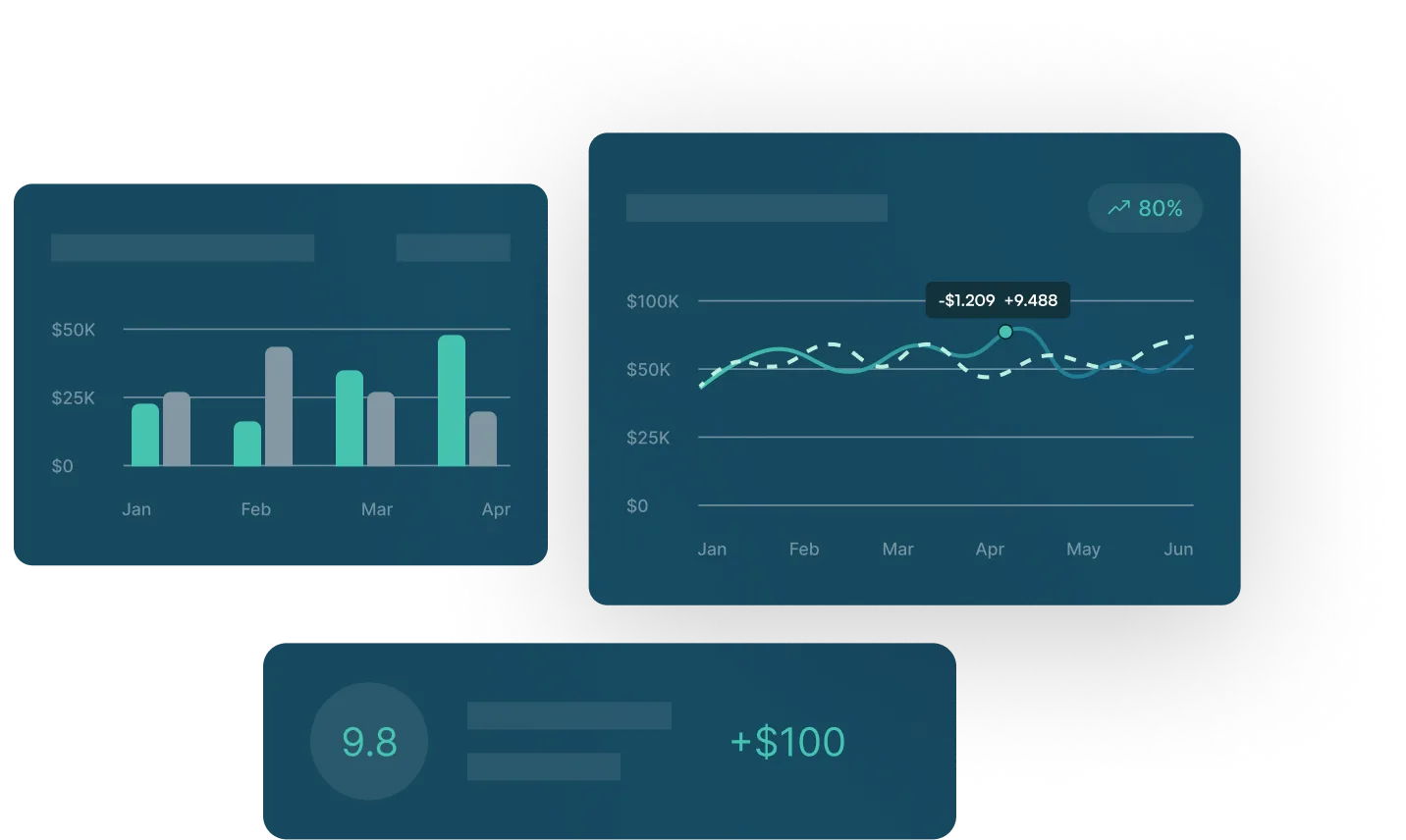How Does FX Risk Impact Cash Forecasting?


When businesses operate across multiple currencies, even small exchange rate fluctuations can change the value and timing of expected cash flows. Payments received or made in foreign currencies may end up being a different amount than anticipated, making it harder to predict true liquidity positions.
As a result, FX risk can have a significant impact on profits, as well as a company’s ability to plan, allocate capital, and make confident financial decisions. Understanding this connection is key to building accurate cash forecasts in a volatile global market.
What Is Foreign Exchange (FX) Risk?
Foreign exchange (FX) risk refers to the potential financial impact of currency value fluctuations on a company’s cash flows, assets, and liabilities. When businesses operate or trade internationally, they’re exposed to changes in exchange rates between currencies.
These shifts can affect everything from the cost of imports and exports to the value of foreign revenues and investments, ultimately influencing profitability and cash positions.
Why FX Risk Matters to Treasury and Finance Teams
For treasury and finance teams, FX risk directly impacts liquidity, working capital, and overall financial stability. Currency movements can alter the value of expected cash flows, making it harder to forecast accurately or meet funding needs.
Managing this risk effectively helps ensure reliable forecasts, smoother cash management, and stronger protection against unexpected currency swings.
What Is Cash Forecasting?
Cash forecasting is the process of predicting a company’s future cash inflows and outflows to ensure it has enough liquidity to meet obligations and fund growth. Accurate forecasts help finance teams plan for expenses, manage working capital, and make informed strategic decisions.
Why Cash Forecasting Matters to Treasury and Finance Teams
Cash forecasting gives treasury and finance teams a clear view of upcoming liquidity needs and financial flexibility. It enables better decision-making for funding, investment, and risk management, helping organizations avoid shortfalls and maintain financial stability.
How FX Risk Impacts Cash Forecasting
FX risk can make cash forecasting more complex and less predictable. Understanding these impacts is essential for building accurate, reliable forecasts in a global business environment.
Currency Volatility Distorts Cash Flow Predictions
Fluctuating exchange rates can cause the value of anticipated cash inflows and outflows to change unexpectedly.
This volatility makes it difficult to predict how much cash will actually be available, increasing the risk of liquidity gaps and forcing finance teams to adjust forecasts frequently.
Translation and Consolidation Challenges
When subsidiaries operate in different currencies, consolidating their financials into a single reporting currency can be tricky.
Exchange rate changes can distort reported cash positions and earnings, making it harder for treasury and finance teams to get an accurate view of overall liquidity.
Hedging Strategies and Forecast Accuracy
Hedging can help protect against FX fluctuations, but its effectiveness relies on accurate cash forecasts.
If forecasts are off, hedges may be misaligned, leaving the company exposed or over-hedged. Coordinating forecasting and risk management is key to maximizing the benefits of hedging.
Balance Sheet and P&L Volatility
FX fluctuations can impact both the balance sheet and profit and loss statements, altering the reported value of assets, liabilities, and revenues.
This volatility complicates cash planning, as treasury and finance teams must account for changes that don’t reflect actual cash movements but still affect financial decisions.
Common Challenges in Managing FX Risk and Cash Forecasting Together
Managing FX risk alongside cash forecasting presents unique challenges. Currency volatility, fragmented data, and misaligned processes can make it difficult for treasury teams to effectively mitigate risk.
Centralize Exposure Management
Bringing all currency exposures into a single, centralized system gives treasury teams a complete view of global risk. Centralization improves visibility, simplifies reporting, and enables more accurate cash forecasts across multiple currencies and business units.
Automate Forecasting and FX Data Integration
Integrating FX data directly into automated cash forecasting processes reduces manual errors and delays. Real-time updates from ERP systems, banks, and market feeds help finance teams maintain accurate, up-to-date forecasts despite currency fluctuations.
Implement Dynamic Scenario Modeling
“What-if” scenarios for different currency movements helps treasury teams anticipate potential impacts on cash flow. Dynamic modeling allows organizations to plan for volatility, evaluate risks, and make more informed liquidity and hedging decisions.
Leverage Hedging Tools and Analytics
Using hedging instruments like forwards, options, and swaps alongside advanced analytics helps manage FX risk more effectively. Analytics provide insight into hedge effectiveness and potential gaps, ensuring that cash forecasts remain aligned with actual exposures.
Technology’s Role: How Modern Platforms Enhance FX Risk and Forecasting
Treasury technology is transforming how organizations manage FX risk and cash forecasting. Modern platforms provide deeper visibility and greater accuracy, empowering finance teams to make data-driven decisions before market changes hit.
- Real-Time Visibility: Instant access to up-to-date treasury data allows teams to spot risks early on and stay adaptable.
- AI and Predictive Analytics: Artificial intelligence enhances forecasting accuracy by identifying patterns and predicting currency movements. The predictive analytics this tech provides can help finance teams build proactive plans against FX changes.
- Integration and Automation: Integration between treasury, ERP, and banking systems helps automate data flow and allows for faster reconciliation. This connectivity reduces manual work and ensures forecasts reflect the latest FX rates.
Building a Resilient Cash Forecasting Strategy
As FX risk continues to influence global business, organizations that manage it effectively can turn uncertainty into opportunity. Accurate cash forecasting, combined with centralized exposure management, helps finance teams maintain liquidity and make decisions with confidence.
By adopting a connected, technology-driven approach to FX risk and cash forecasting, companies can strengthen financial resilience and improve decision-making in volatile markets.
Exploring solutions like GTreasury can help treasury and finance teams achieve greater accuracy, efficiency, and control over global cash management.
How Does FX Risk Impact Cash Forecasting?
When businesses operate across multiple currencies, even small exchange rate fluctuations can change the value and timing of expected cash flows. Payments received or made in foreign currencies may end up being a different amount than anticipated, making it harder to predict true liquidity positions.
As a result, FX risk can have a significant impact on profits, as well as a company’s ability to plan, allocate capital, and make confident financial decisions. Understanding this connection is key to building accurate cash forecasts in a volatile global market.
What Is Foreign Exchange (FX) Risk?
Foreign exchange (FX) risk refers to the potential financial impact of currency value fluctuations on a company’s cash flows, assets, and liabilities. When businesses operate or trade internationally, they’re exposed to changes in exchange rates between currencies.
These shifts can affect everything from the cost of imports and exports to the value of foreign revenues and investments, ultimately influencing profitability and cash positions.
Why FX Risk Matters to Treasury and Finance Teams
For treasury and finance teams, FX risk directly impacts liquidity, working capital, and overall financial stability. Currency movements can alter the value of expected cash flows, making it harder to forecast accurately or meet funding needs.
Managing this risk effectively helps ensure reliable forecasts, smoother cash management, and stronger protection against unexpected currency swings.
What Is Cash Forecasting?
Cash forecasting is the process of predicting a company’s future cash inflows and outflows to ensure it has enough liquidity to meet obligations and fund growth. Accurate forecasts help finance teams plan for expenses, manage working capital, and make informed strategic decisions.
Why Cash Forecasting Matters to Treasury and Finance Teams
Cash forecasting gives treasury and finance teams a clear view of upcoming liquidity needs and financial flexibility. It enables better decision-making for funding, investment, and risk management, helping organizations avoid shortfalls and maintain financial stability.
How FX Risk Impacts Cash Forecasting
FX risk can make cash forecasting more complex and less predictable. Understanding these impacts is essential for building accurate, reliable forecasts in a global business environment.
Currency Volatility Distorts Cash Flow Predictions
Fluctuating exchange rates can cause the value of anticipated cash inflows and outflows to change unexpectedly.
This volatility makes it difficult to predict how much cash will actually be available, increasing the risk of liquidity gaps and forcing finance teams to adjust forecasts frequently.
Translation and Consolidation Challenges
When subsidiaries operate in different currencies, consolidating their financials into a single reporting currency can be tricky.
Exchange rate changes can distort reported cash positions and earnings, making it harder for treasury and finance teams to get an accurate view of overall liquidity.
Hedging Strategies and Forecast Accuracy
Hedging can help protect against FX fluctuations, but its effectiveness relies on accurate cash forecasts.
If forecasts are off, hedges may be misaligned, leaving the company exposed or over-hedged. Coordinating forecasting and risk management is key to maximizing the benefits of hedging.
Balance Sheet and P&L Volatility
FX fluctuations can impact both the balance sheet and profit and loss statements, altering the reported value of assets, liabilities, and revenues.
This volatility complicates cash planning, as treasury and finance teams must account for changes that don’t reflect actual cash movements but still affect financial decisions.
Common Challenges in Managing FX Risk and Cash Forecasting Together
Managing FX risk alongside cash forecasting presents unique challenges. Currency volatility, fragmented data, and misaligned processes can make it difficult for treasury teams to effectively mitigate risk.
Centralize Exposure Management
Bringing all currency exposures into a single, centralized system gives treasury teams a complete view of global risk. Centralization improves visibility, simplifies reporting, and enables more accurate cash forecasts across multiple currencies and business units.
Automate Forecasting and FX Data Integration
Integrating FX data directly into automated cash forecasting processes reduces manual errors and delays. Real-time updates from ERP systems, banks, and market feeds help finance teams maintain accurate, up-to-date forecasts despite currency fluctuations.
Implement Dynamic Scenario Modeling
“What-if” scenarios for different currency movements helps treasury teams anticipate potential impacts on cash flow. Dynamic modeling allows organizations to plan for volatility, evaluate risks, and make more informed liquidity and hedging decisions.
Leverage Hedging Tools and Analytics
Using hedging instruments like forwards, options, and swaps alongside advanced analytics helps manage FX risk more effectively. Analytics provide insight into hedge effectiveness and potential gaps, ensuring that cash forecasts remain aligned with actual exposures.
Technology’s Role: How Modern Platforms Enhance FX Risk and Forecasting
Treasury technology is transforming how organizations manage FX risk and cash forecasting. Modern platforms provide deeper visibility and greater accuracy, empowering finance teams to make data-driven decisions before market changes hit.
- Real-Time Visibility: Instant access to up-to-date treasury data allows teams to spot risks early on and stay adaptable.
- AI and Predictive Analytics: Artificial intelligence enhances forecasting accuracy by identifying patterns and predicting currency movements. The predictive analytics this tech provides can help finance teams build proactive plans against FX changes.
- Integration and Automation: Integration between treasury, ERP, and banking systems helps automate data flow and allows for faster reconciliation. This connectivity reduces manual work and ensures forecasts reflect the latest FX rates.
Building a Resilient Cash Forecasting Strategy
As FX risk continues to influence global business, organizations that manage it effectively can turn uncertainty into opportunity. Accurate cash forecasting, combined with centralized exposure management, helps finance teams maintain liquidity and make decisions with confidence.
By adopting a connected, technology-driven approach to FX risk and cash forecasting, companies can strengthen financial resilience and improve decision-making in volatile markets.
Exploring solutions like GTreasury can help treasury and finance teams achieve greater accuracy, efficiency, and control over global cash management.

Siehe GTreasury in Aktion
Nehmen Sie noch heute Kontakt mit unterstützenden Experten, umfassenden Lösungen und ungenutzten Möglichkeiten auf.





























.png)





.png)
.png)







.png)












.jpeg)

.jpeg)


.jpeg)







.jpeg)

.jpeg)





.jpeg)


.jpeg)

.jpeg)








.jpeg)


.jpg)





.jpg)

.jpg)





